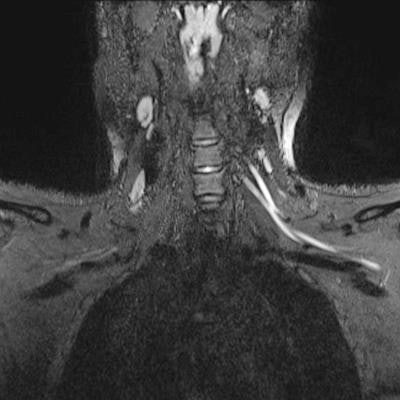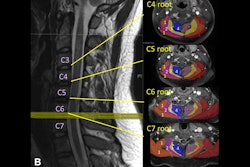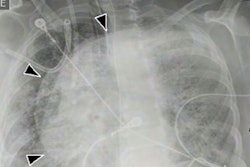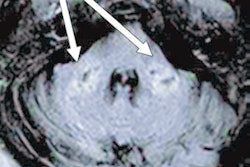
A combination of MR neurography and ultrasound could help clinicians better diagnose what is causing some recovered COVID-19 patients to continue to experience chronic pain, numbness, or weakness in their hands or limbs, according to commentary published December 1 in Radiology.
The article suggests that combining the two imaging modalities is an effective way to identify nerve damage that results from COVID-19, especially as patients recover and are tracked long-term, lead author Dr. Swati Deshmukh of Northwestern University in Chicago said in a statement released by the university.
"There are physicians out there who are seeing these otherwise young, healthy patients, and they don't know exactly what's wrong and they're thinking, 'What am I supposed to do for patients with post-COVID pain and weakness?' " Deshmukh said. "I want physicians and patients to be aware of the diagnostic options available due to recent innovations in technology and inquire if advanced imaging might be right for them."
As the COVID-19 pandemic has continued, clinicians have observed neuromuscular complications of the illness as those who have recovered participate in rehabilitative care. Imaging is a key tool for evaluating what causes these complications -- from inflammatory neuropathy, to prone positioning-related compression injuries, to nerve entrapment as the result of hematoma, Deshmukh's group noted.
 An MR image of a patient in their early 20s shows nerve injury of the left brachial plexus in the neck. The patient experienced left arm weakness and pain after recovering from COVID-19 respiratory illness, which prompted them to see their primary care physician. As a result of the MRI findings, the patient was referred to the COVID-19 neurology clinic for treatment. Image and caption courtesy of Northwestern University.
An MR image of a patient in their early 20s shows nerve injury of the left brachial plexus in the neck. The patient experienced left arm weakness and pain after recovering from COVID-19 respiratory illness, which prompted them to see their primary care physician. As a result of the MRI findings, the patient was referred to the COVID-19 neurology clinic for treatment. Image and caption courtesy of Northwestern University.Determining the cause makes treatment more effective, according to the team. If the cause is due to injury from prone positioning, a patient would be referred for rehabilitation or peripheral nerve surgery. If nerve damage has been caused by inflammatory response, the patient should see a neurologist. And if the damage is caused by hematoma, blood thinner medications should be adjusted and surgery may be necessary, according to the group.
Ultrahigh-resolution ultrasound and MR neurography (which visualizes the peripheral nerves) can localize the problem and assess the severity of nerve damage and whether that damage has affected the muscles, according to the team.
"Peripheral nerve imaging aids diagnosis and may guide management in COVID-19 patients with neuromuscular symptoms arising from the infectious disease, hospitalization course, or secondary to a complication in treatment," the group concluded.




.fFmgij6Hin.png?auto=compress%2Cformat&fit=crop&h=100&q=70&w=100)




.fFmgij6Hin.png?auto=compress%2Cformat&fit=crop&h=167&q=70&w=250)











